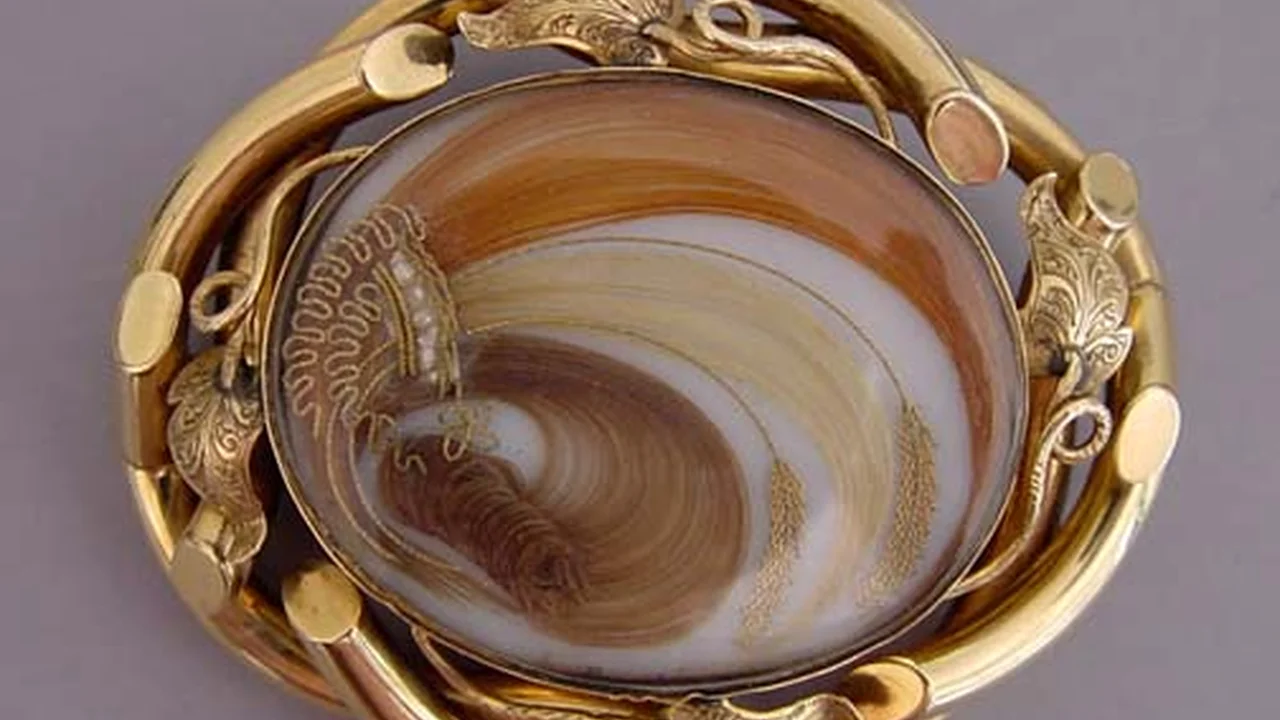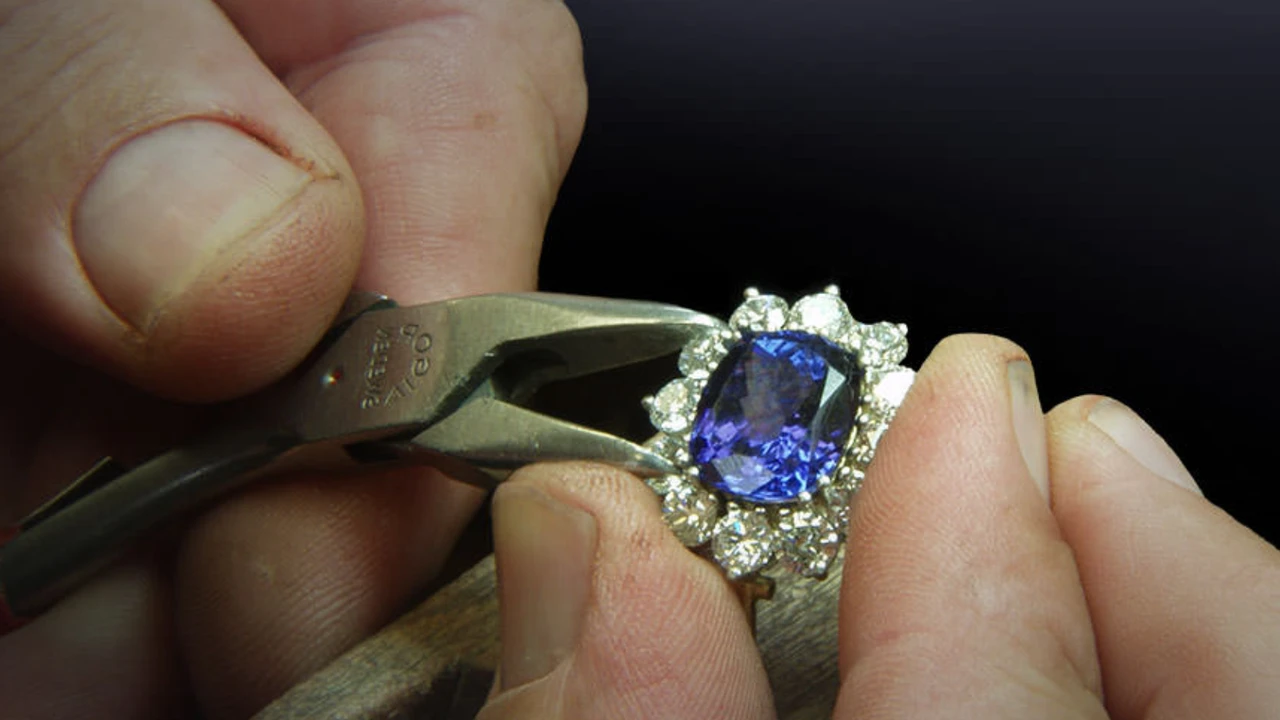7 Most Iconic Antique Jewelry Designers You Should Know
Explore the most influential antique jewelry designers Learn about their signature styles and contributions to the art of jewelry making.

Louis Comfort Tiffany Jewelry Design: Art Nouveau Pioneer
Louis Comfort Tiffany, son of Charles Lewis Tiffany (founder of Tiffany & Co.), carved his own path in the world of art. While his name is synonymous with stained glass, his contributions to jewelry design during the Art Nouveau period are equally significant. Tiffany’s jewelry is characterized by its organic forms, vibrant colors achieved through innovative enameling techniques, and the use of unconventional gemstones. He drew inspiration from nature, creating pieces that featured flowing lines, insects, flowers, and mythical creatures.
Signature Style: Iridescent glass, plique-à-jour enamel, nature-inspired motifs.
Product Recommendation: A Tiffany & Co. Art Nouveau dragonfly brooch featuring plique-à-jour enamel wings and cabochon gemstones. This brooch exemplifies Tiffany’s mastery of color and form. (Estimated Price: $5,000 - $15,000 depending on condition and materials)
Usage Scenario: This brooch would be a stunning addition to a formal gown or a tailored jacket, adding a touch of whimsical elegance.
Comparison: Unlike the geometric precision of Art Deco jewelry, Tiffany's Art Nouveau pieces celebrate fluidity and organic beauty. Compared to the more structured designs of Cartier, Tiffany’s jewelry feels more free-spirited and artistic.
René Lalique Jewelry: The Master of Art Nouveau
René Lalique was a French glass designer and jeweler whose work defined the Art Nouveau movement. He pushed the boundaries of jewelry design by incorporating glass as a primary material, often pairing it with precious metals and gemstones. Lalique's designs were highly imaginative, featuring nymphs, flowers, and insects rendered in exquisite detail. His use of pâte de verre (glass paste) allowed him to create intricate textures and subtle color variations.
Signature Style: Pâte de verre glass, mythical figures, intricate detailing, use of horn and ivory.
Product Recommendation: A René Lalique pendant featuring a female figure surrounded by flowing hair, crafted from pâte de verre glass and set in gold. This pendant showcases Lalique's signature style and his ability to transform glass into a work of art. (Estimated Price: $8,000 - $25,000 depending on condition and rarity)
Usage Scenario: This pendant would be a conversation starter, perfect for wearing to an art gallery opening or a special event.
Comparison: While both Tiffany and Lalique embraced Art Nouveau, Lalique’s work is arguably more daring in its use of unconventional materials like horn and ivory. He also focused more heavily on glass as the central element of his designs, whereas Tiffany often combined glass with more traditional jewelry materials.
Cartier Jewelry Design: Timeless Elegance and Innovation
Cartier, founded in Paris in 1847, is synonymous with luxury and timeless elegance. While not strictly confined to one era, Cartier's influence on antique and estate jewelry is undeniable. The house is renowned for its impeccable craftsmanship, use of the finest gemstones, and innovative designs. Cartier’s creations range from the delicate garland style of the Belle Époque to the bold geometric forms of Art Deco. Their “Mystery Clocks,” “Tutti Frutti” jewelry, and panther motifs are iconic examples of their enduring legacy.
Signature Style: Geometric designs, panther motifs, use of platinum and diamonds, exceptional craftsmanship.
Product Recommendation: A Cartier Art Deco diamond and onyx bracelet featuring geometric patterns and clean lines. This bracelet embodies the sophistication and glamour of the Art Deco era. (Estimated Price: $20,000 - $50,000 depending on size and gemstone quality)
Usage Scenario: This bracelet would be a stunning addition to a black-tie ensemble or a chic cocktail dress.
Comparison: Compared to the organic forms of Art Nouveau, Cartier’s Art Deco jewelry is characterized by its geometric precision and streamlined aesthetic. While Lalique experimented with unconventional materials, Cartier focused on the exquisite use of precious metals and gemstones.
Van Cleef & Arpels Jewelry: Mystery Setting and Alhambra
Van Cleef & Arpels, founded in Paris in 1906, is known for its innovative techniques and exquisite designs. Their 'Mystery Setting,' in which gemstones are set without visible prongs, is a testament to their exceptional craftsmanship. The Alhambra collection, featuring four-leaf clover motifs, has become a timeless symbol of good luck and elegance. Van Cleef & Arpels' jewelry is often characterized by its delicate beauty, refined details, and use of high-quality gemstones.
Signature Style: Mystery Setting, Alhambra motif, ballerina brooches, use of precious gemstones.
Product Recommendation: A Van Cleef & Arpels Alhambra necklace featuring carnelian clover motifs set in yellow gold. This necklace is a classic example of Van Cleef & Arpels' iconic design. (Estimated Price: $5,000 - $15,000 depending on size and materials)
Usage Scenario: This necklace is versatile enough to be worn every day or for special occasions, adding a touch of elegance to any outfit.
Comparison: While Cartier embraced bold geometric designs, Van Cleef & Arpels often favored more delicate and whimsical motifs. The Mystery Setting technique, unique to Van Cleef & Arpels, sets their jewelry apart from other designers.
Coco Chanel Jewelry: Costume Jewelry Revolution
Coco Chanel revolutionized the world of fashion and jewelry. While not a traditional 'antique' designer in the sense of working with precious metals and gemstones exclusively, her influence on jewelry design is undeniable. Chanel popularized costume jewelry, making it fashionable to wear bold, statement pieces crafted from non-precious materials. Her signature designs included layered pearl necklaces, camellia brooches, and Maltese cross cuffs. Chanel's jewelry empowered women to express their individuality and embrace a more modern aesthetic.
Signature Style: Costume jewelry, layered pearl necklaces, camellia brooches, Maltese cross cuffs, use of faux gemstones.
Product Recommendation: A vintage Chanel layered pearl necklace featuring faux pearls and a signature CC logo clasp. This necklace is a classic example of Chanel's iconic style. (Estimated Price: $1,000 - $5,000 depending on condition and rarity)
Usage Scenario: This necklace can be dressed up or down, adding a touch of Chanel glamour to any outfit.
Comparison: Unlike the fine jewelry designers who focused on precious materials, Chanel embraced costume jewelry, making it accessible and fashionable. Her designs were often bolder and more playful than the more traditional styles of other designers.
Suzanne Belperron Jewelry: Bold and Sculptural Designs
Suzanne Belperron was a French jewelry designer known for her bold, sculptural designs. She rejected traditional jewelry conventions and created pieces that were both modern and timeless. Belperron's jewelry is characterized by its use of unusual materials, asymmetrical forms, and a focus on comfort and wearability. Her designs were highly sought after by royalty, celebrities, and fashion icons.
Signature Style: Sculptural forms, use of unusual materials (e.g., chalcedony, rock crystal), asymmetrical designs, focus on wearability.
Product Recommendation: A Suzanne Belperron chalcedony and diamond cuff bracelet featuring a bold, sculptural design. This bracelet exemplifies Belperron's unique style and her ability to transform unconventional materials into works of art. (Estimated Price: $15,000 - $40,000 depending on condition and materials)
Usage Scenario: This bracelet would make a statement worn alone or paired with other minimalist jewelry.
Comparison: Compared to the delicate designs of Van Cleef & Arpels, Belperron’s jewelry is bolder and more sculptural. Her use of unconventional materials sets her apart from designers who focused solely on precious metals and gemstones.
David Webb Jewelry: Animal Motifs and Bold Enamel
David Webb was an American jewelry designer known for his bold, colorful designs and his signature animal motifs. His jewelry is characterized by its use of enamel, gemstones, and precious metals. Webb's designs were inspired by nature, mythology, and his travels around the world. His animal bracelets, featuring lions, tigers, and zebras, became iconic symbols of his brand.
Signature Style: Animal motifs, bold enamel, use of gemstones and precious metals, statement pieces.
Product Recommendation: A David Webb zebra bracelet featuring black and white enamel stripes and gemstone eyes. This bracelet is a classic example of Webb's signature animal designs. (Estimated Price: $20,000 - $60,000 depending on condition and materials)
Usage Scenario: This bracelet would be a striking addition to any outfit, adding a touch of whimsy and sophistication.
Comparison: While Chanel embraced costume jewelry, Webb focused on creating high-end pieces using precious materials. His bold use of enamel and animal motifs sets him apart from other designers who favored more traditional designs.
:max_bytes(150000):strip_icc()/277019-baked-pork-chops-with-cream-of-mushroom-soup-DDMFS-beauty-4x3-BG-7505-5762b731cf30447d9cbbbbbf387beafa.jpg)






